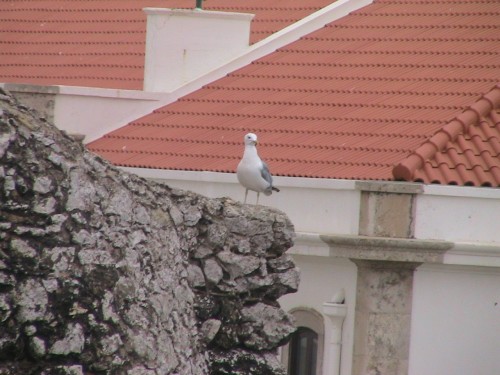Um palácio original que deslumbra logo no primeiro momento pela originalidade da sua entrada. Fui visita-lo sozinha. Apanhei um autocarro que me deixou um pouco distante do local mas que se veio a revelar uma verdadeira supresa. No meio do bairro simpático de casas térreas que rodeiam o palácio descobri um canal de água que me conduziu a um magnífico círculo de edíficios e anexos no centro do qual se encontra um jardim ladeado pelo dito canal e pontezinhas, avistando-se ao fundo a entrada deste lindo “Schloss”. Antes de entrar, vistei a loja da fábrica de porcelana com marca própria e preços proibitivos. Uma das peças mais pequeninas que andei a “namorar” custava apenas a módica quantia de 70 Euros. Definitivamente um sítio a não considerar para compras de “Erinnerungen”. No palácio o que mais me sumpreendeu foi a galeria de retratos, ou seja, uma sala cheia de pinturas de damas da época. A guia (excepcional!) desafionou-nes a descobrir uma das supostas noivas do rei Ludwig. Foi uma autêntica supresa, atendendo que a sua grande paixão era a sua prima Sissi da Aústria. Só visto! Depois da tour da praxe pelo palácio, aventurei-me pelos habituais espaços verdes onde me cruzei com meia dúzia de pessoas. No entanto, apesar de achar que poderia eventualmente a expor-me a uma situação de risco só me aprecebi disso ao fim do dia quando reflecti no assunto. Enfim, depois de uma semana a passear sozinha por Munique, julgo que posso confirmar que se trata de uma cidade segura em que não senti qualquer medo mesmo em siuações em que não se avistava vivalma e nas mais variadas horas do dia e da noite.
Mais info:
The palace was commissioned by the electoral couple Ferdinand Maria and Henriette Adelaide of Savoy to Agostino Barelli in 1664 after the birth of their son Maximilian II. The center pavilion was completed in 1675.
Starting in 1701, the heir to the sovereign duchies of Bavaria, Maximilien, conducted a systematic extension of the palace. Two pavilions were added each in the south and north of Barelli’s palace by Enrico Zucalli and Giovanni Antonio Viscardi. Later, the south section of the palace was further extended to form the court stables. As a balance, the orangerie was added to the north. Finally, a grand circle with baroque mansions (the Schlossrondell) was erected under Max Emanuel’s son Holy Roman Emperor Charles VII Albert.
With the treaty of Nymphenburg concluded in July 1741, Charles Albert allied with France and Spain against Austria. For a long time, the palace was the summer residence of the rulers of Bavaria. King Max I Joseph died there in 1825, and his great-grandson King Ludwig II was born there in 1845.
Today, Nymphenburg is open to the public, but also continues to be a home and chancery for the head of the house of Wittelsbach, currently HRH Franz, Duke of Bavaria.
The palace, together with its park, is now one of the most famous sights of Munich. The Steinerner Saal (Stone Hall), with ceiling frescoes by Johann Baptist Zimmermann and F. Zimmermann and decorations by François de Cuvilliés, is an impressive site. Acting as a grand hall, it occupies over three floors of the central pavilion of the palace.
Some rooms still show their original baroque decoration while others were later redesigned in rococo or neoclassical style. The former small dining room in the south pavilion today houses the Gallery of Beauties of King Ludwig I of Bavaria.
The court stables contain one of the most important museums of ancient carriages. They also played a part in historical events – the Paris Coronation Coach for example was used for the coronation of Emperor Charles VII in 1742. Among the main attractions of the museum are the magnificent carriages and sleighs of King Ludwig II. The first floor houses a collection of Nymphenburg porcelain, the factory which, also located in the palace complex, was founded by Maximilian III Joseph.
Mais em: http://www.schloesser.bayern.de/englisch/palace/objects/ny_schl.htm














